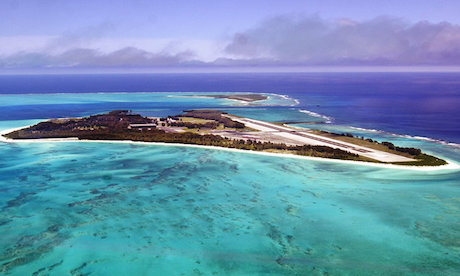Rising sea levels could make most Pacific Ocean atolls uninhabitable by the middle of the century — or possibly sooner.
The “tipping point” depends on the rate of climate change — and above all the stability of Antarctica.
These are the conclusions reached in a recently published study partly funded by the Pentagon’s Strategic Environmental Research and Development Programme.
The United States has military installations or assets on a number of Pacific Islands.
The study was conducted by researchers from the US Geological Survey, the National Oceanic and Atmospheric Administration and several other institutions in the United States, Monaco and the Netherlands.
In the worst case, the paper says, it could come before 2030.
Most studies on the resilience of these islands to sea-level rise have projected that they will experience minimal inundation impacts until at least the end of the 21st century.
However, these have not taken into account the additional hazard of wave-driven overwash or its impact on freshwater availability.
The danger comes because of the increasing occurrence of large waves that spill across the island and sink into its groundwater.
However, a prominent expert in sea-level rise who was not involved in the study, Bob Kopp of Rutgers University, questioned that especially dire finding.
“They’re asking the right questions, they’re doing the right sorts of analysis, but I’m a little sceptical of some of their early-century dates for some things,” Kopp said in an interview with The Washington Post.
Less dire scenarios predict the critical moment will come in the decade between 2030 and 2040 for a high warming scenario without Antarctic collapse, or 2055 to 2065 for a middle-range warming scenario.
Kopp said the middle scenario is consistent with what is known, and provided an analysis suggesting that while there is indeed a major threat, it won’t arrive as soon as 2030 but could by the 2050s.
Source
